
Associazione Calcio Monza is a professional football club based in Monza, Lombardy, Italy. They play in the Serie B, the second tier of Italian football, following promotion in the 2019–20 season.

Brugherio is a comune (municipality) in the Province of Monza and Brianza in the Italian region Lombardy, located about 10 kilometres northeast of Milan. It was established December 9, 1866 unifying the suppressed municipalities of Baraggia, San Damiano and Moncucco, together with the villages of Bindellera, Cesena, Gelosa, San Paolo, Torazza, Occhiate and Increa.

San Giorgio Morgeto is a comune (municipality) in the Province of Reggio Calabria in the Italian region Calabria, located about 70 kilometres southwest of Catanzaro and about 50 km (31 mi) northeast of Reggio Calabria. As of 31 December 2004, it had a population of 3,356 and an area of 35.1 square kilometres (13.6 sq mi).
Eugenio Corti was an Italian writer born in Besana in Brianza. After participating in the Italian retreat from Russia in World War II, and a period of recovery, he joined the regular Italian army in southern Italia, to fight the German along with the Allies. Based on these experiences, he wrote Few Returned and The Last Soldiers of the King. His seminal work, however, is The Red Horse, a 1000-page novel again based on his experiences and those of his fellow Italians during and after the Second World War. It was voted the best book of the 1980s in a public survey in Italy and has been translated into eight languages, including Japanese. It has had thirty-four editions since it was first published in May 1983.
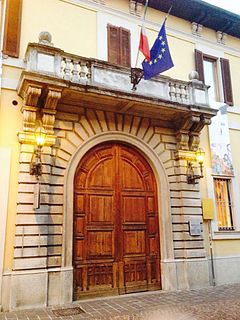
The Palazzo Ghirlanda-Silva is a patrician building in the old town of Brugherio, Italy. Built in the first half of the nineteenth century, it now houses the public library. It has an area of 1,992 m2 (21,440 sq ft), of which 1,407 m2 (15,140 sq ft) are used for library services, with the remaining space providing an exhibition room, an auditorium and offices.
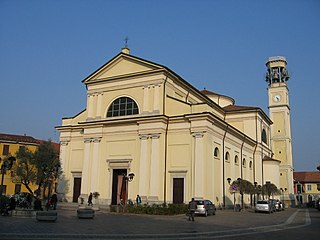
The Church of Saint Bartholomew is the cathedral and the oldest parish in Brugherio, Italy. It houses relics of the three Magi. It is characterised by its relatively high bell tower measuring 36.8 metres (121 ft).

The Increa Park is a green area in communal ownership in the south-west part of Brugherio, in Lombardy. Inside the Italian park is a large lake and the remains of the Increa Quarry, which gives its name to the park. This park is part of a larger national park called Parco Est delle Cave. It borders Cernusco sul Naviglio and it is near Milan's eastern bypass road. It covers about 33 hectares.

The War Memorial of Brugherio is a sculptural complex made by Ernesto Bazzaro in 1933. It is situated in Via Vittorio Veneto, in front of the Federico Sciviero Primary School.

Villa Scotti-Cornaglia-Noseda-Bertani, commonly known as Villa Fiorita, is a building in Lombardy, Italy, where the Brugherio Comune's headquarters are housed.

Saint Ambrose is a small church which is an annex to the farmhouse that takes its name from it, in Brugherio, Italy.

The church of Saint Margaret is a 16th-century chapel dedicated to Saint Margaret of Antioch. It is located in Cassina Baraggia, Brugherio, Italy. The church is adjacent to the Villa Brivio, to which it belonged.
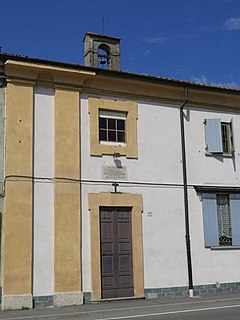
The church of Saint Mary Immaculate is a church that is annexed to Cascina Increa, next to the entrance of Villa Tizzoni Ottolini in Brugherio. The church has undergone renovations, however, like the farmhouse to which it is attached, has maintained its original architecture. Increa, the area where the church is located, formerly belonged to the municipality of Cernusco Asinario ; it became part of the parish of Saint Bartholomew in 1578 and was subsequently annexed to the municipality of Brugherio in 1866.

Cascina Increa is one of the farmhouses of Brugherio, on the southeastern border of the municipality. It enjoys the protection of the Soprintendenze per i Beni Architettonici e Paesaggistici, i.e., the Ministry of Cultural Heritage and Activities and Tourism (MiBACT) of its respective province because of its surviving Renaissance architecture.

Cascina Sant'Ambrogio is the oldest among the farmhouses in Brugherio, Italy. It is annexed to Saint Ambrose Church from which it takes its name.
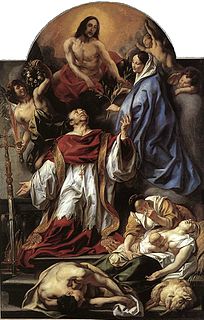
There are three plague crosses in Brugherio, in the province of Monza and Brianza in Lombardy, in northern Italy. They were erected after the plague that struck Monza and its surrounding area in 1576. The crosses are three that remain of four that marked where there were four altars used to celebrate religious services during the plague. The plague of 1576 was in fact called "the plague of Saint Charles", given the Bishop's closeness to those affected. Information about the plague can be found in the Bishop of Milan, Saint Charles Borromeo's notes.
The old farmhouses of Brugherio were agricultural structures typical of the Po-Valley in Lombardy, which gave its name to the surrounding areas as well, roughly corresponding to fractional towns in which Brugherio was divided. The union of the various small rural municipalities in which the territory was fragmented gave birth in 1866 to the municipality of Brugherio. Some are still visible: Bindellera, Casecca, Cattoni, Comolli, Dorderio, Guzzina, Increa, Modesta, Moia, Occhiate, Pareana, San Cristoforo, Sant'Ambrogio, San Paolo and Torazza.
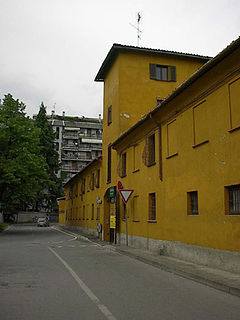
Cascina Guzzina is a farmhouse located in the southern part of Brugherio, on the border with Cologno Monzese. The name comes from gussetta, which formerly referred to the cocoon of the silkworm, whose breeding was widespread in the area. Agricultural complexes known as "agricultural courts", which once held prolific agricultural activity, are now civilian residences and businesses.
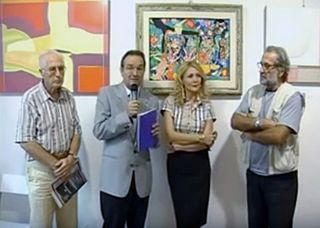
Mauro Marrucci was an Italian artist born in Volterra, Italy on December 18, 1937 by artisans parents and he died November 15, 2014 in Grosseto. Since 1950 he is acting as the Alabaster craftsman and wood and began his artistic research, released by academic schemes, as a graphic designer and painter and makes experiences in the field of sculpture. In 1861 he won first teaching assignment in Tuscany where he continues to practice as a graphic designer, painter and designer. Since 1973, public writings of artistic teaching and non-fiction. In December 1974 on Public Education of drawing the essay "The educational dialogue through the work of art." He also collaborates with the magazine School and cities. In 1982 he moved to Milan to teach Design and Art History at the XIII High School. In 1986 he held the chair of architecture at the Art School "Pietro Aldi" in Grosseto until retirement. From 1957 to 2011 he took part in demonstrations in graphics and painting in Italy and abroad, receiving reports from the most qualified critics and several awards.
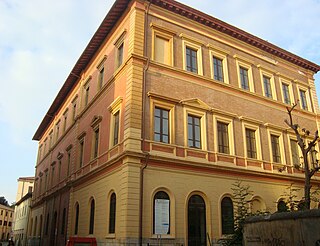
The Biblioteca Chelliana is a public library in Grosseto, Italy, founded in 1860 by Giovanni Chelli. In 1865 it became a public library as Biblioteca comunale Chelliana. It currently occupies the Palazzo Mensini built in 1898.



















